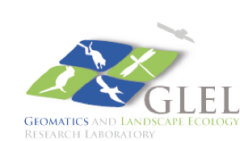This project is addressing two key information gaps affecting agriculture and related sectors:
- risks for local agriculture caused by extreme weather events under a changing climate, specific to key crop development and farm operation stages; and
- climate change information on the region, describing the nature and extent to which future weather conditions are expected to change.
Future weather projections are commonly presented in general terms, for large geographic areas, and coarse time scales; these provide limited value to farmers and the agricultural sector. In our work, we focus on methods to transform climate model scenarios into weather projections that can be used at seasonal time scales and across localized areas (e.g. within sub-regions of eastern Ontario); this provides information regarding the nature of change, by season, that can be applied to operations on individual farms.
The use of a Geographic Information System approach allows these outcomes to be presented not just as graphs or tables, but also visually, using maps of the local area to show areas at risk of greater changes than others. Dynamic models of land use change and agricultural operations are being developed and refined, based on consultations with farmers and environmental managers in the area, and the visual outputs from scenario runs of the model provide information for local scale planning discussions.
Data collected for this work can be useful for many other people and applications, but there are many possible concerns about appropriate uses and relative uncertainty in different kinds of data; therefore, one of our goals is to provide all of our data and accompanying documentation and uncertainty analysis, through a general access web site. Additionally, for farmers and potentially other members of the general public, translations of these data into indicators that illuminate trends in the frequency and timing of extreme weather events that impact farms or rural health are more important than the raw data, and they will also be highlighted in our web-based communications. Once the tools and supporting data are completed and tested for the eastern Ontario region, we will share our results through presentations and training, and launch the development of equivalent models in other agricultural regions of Ontario.
This project is one module of a continuing collaboration. It started as the “Farms to Regions” project at Agriculture and Agri-Food Canada. That work involved, among many others, these current core contributors:
- Amadou Thiam from Ontario’s Ministry of Agriculture, Food, and Rural Affairs,
- Livia Bizikova at the International Institute of Sustainable Development,
- Patricia Larkin, then at University of Ottawa, and
- the lead developer of Envision, John Bolte of Oregon State University.
We are very grateful for the funding provided by Ontario’s New Directions funding program, making this work possible.
The project is lead by Scott Mitchell (scott.mitchell@carleton.ca) and Ruth Waldick (ruth.waldick@carleton.ca) – please don’t hesitate to contact us with questions or suggestions.
![]()
![]()



